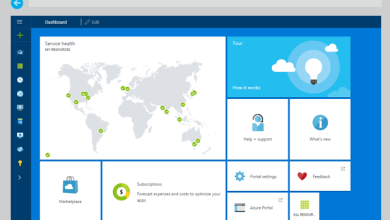AI’s Role in Shaping Tomorrow’s Industry

Ali Katkhada, Group Chief Information Officer at Depa Group
Ali Katkhada, Group CIO at Depa Group is a distinguished executive with a focus on digital transformation and corporate innovation. Katkhada boasts a proven track record in international markets, excelling in board-level interactions and cross-functional team leadership. He is a highly certified professional, holding a Doctorate in Artificial Intelligence and a Master’s in Engineering & Technology Management from the U.S. He is a sought-after advisor and public speaker, and a multiple recipient of the World Top CIO Award.
Through this article, Ali Katkhada, Group CIO at Depa Group, explores the transformative impact of artificial intelligence (AI) on the construction industry. Katkhada outlines how AI technologies, including machine learning, neural networks and computer vision, are revolutionizing project management, safety, resource allocation and design processes. From predictive analytics to generative design, AI is driving innovation, improving efficiency and optimizing resource use.
The Role of Technology in Human life:
Globally, IT spending has reached approximately $4.7 trillion, with significant investments allocated to fourth-industrial revolution technologies, including AI, Digital Twin, VR and Blockchain. By 2033, these figures are projected to escalate, with IT spending expected to reach around $6-$7 trillion and substantial growth anticipated in deep tech sectors. But what is technology? Technology is an extension of human capacity through machines. So, the magnificent towers of Dubai Marina are possible thanks to the technology of elevators, which allow us to stack floors vertically. Aircraft extend our ability to commute by enabling us to fly, and microphones amplify our voices. Similarly, AI is a technology that extends human intelligence through machines.
Intelligence and Progress:
A useful definition of intelligence is the ability to surprise. A few years ago, all IT conferences and summits focused on topics like 5G, virtualization, edge computing and cloud computing. But not anymore. Have these technologies disappeared? No, they have become so integrated into our daily lives that we use them without even realizing it. Just like previous technologies, AI is following a similar trajectory.
 With AI in BIM workflows, tasks are automated, errors reduced, and collaboration among stakeholders enhanced, creating a more intuitive and efficient approach to project management.
With AI in BIM workflows, tasks are automated, errors reduced, and collaboration among stakeholders enhanced, creating a more intuitive and efficient approach to project management.

Current AI technologies primarily work by predicting the next token in a sequence based on probabilities derived from previous sequences learned by the algorithm. AI achieves this by connecting the dots. Unlike the human brain, which stores patterns and shapes norms rather than discrete information or databases, AI aims to mimic this process. For example, when we encounter a new type of dog, we use similarity learning, adding new patterns to our brains. AI strives to emulate this, making it fundamentally different from traditional search engines.
When librarians have read all the books, search engines will evolve into Generative AI. These advanced systems will not only point us to where information is found but also provide the answers we seek. AI has the potential to evolve beyond its current capabilities. While AI has yet to fully understand the context to the extent of laughing at a joke, there may come a time when AI can prompt itself, achieve breakthroughs and win Nobel Prizes regularly. However, vast amounts of data currently lie dormant in dashboards and warehouses, represented as isolated KPIs and metrics without true understanding.
The Role of AI in Construction
AI technologies, including machine learning, neural networks and computer vision, are unlocking new levels of efficiency, safety and innovation in construction. Here are a few key areas where AI is making a significant impact:
1. Predictive Analytics for Project Management
One of the most promising applications of AI in construction is predictive analytics. By analyzing historical data, AI algorithms can predict potential project delays, estimates to complete, expected total cost, overruns and other risks. This allows project managers to proactively address issues before they escalate, ensuring projects stay on time and within budget. For instance, AI can analyze weather patterns, supply chain disruptions and workforce productivity to provide actionable insights that drive better decision-making.
2. Enhancing Safety with Computer Vision
Safety is very crucial in construction, and AI-powered computer vision is a game-changer in this regard. AI systems can analyze video footage from construction sites in real-time to detect safety hazards, such as workers not wearing protective gear or operating machinery unsafely. Immediate alerts can be sent to site managers, allowing them to take corrective actions promptly. This not only reduces the risk of accidents but also fosters a culture of safety awareness among workers.
3. Conflict Detection and Resolution with BIM and AI
Building Information Modeling (BIM) combined with AI is transforming how we manage and execute projects. Companies like Autodesk & Bentley are leading this transformation. AI automates tasks, reduces errors, and enhances productivity in BIM workflows, expediting design optimization, clash detection and documentation generation. AI’s integration into CAD software facilitates more intuitive and efficient design workflows. By analyzing requirements and automatically generating precise 2D and 3D CAD drawings, AI accelerates the design process, reduces errors and allows for rapid prototyping. Autodesk’s BIM 360 platform leverages AI to identify and resolve conflicts. By using machine learning algorithms, the system can detect clashes and potential issues in 3D models, allowing for early resolution and minimizing costly delays and rework. This advanced use of AI in BIM not only improves project accuracy but also enhances collaboration among different stakeholders.
4. Optimizing Resource Allocation:
AI can significantly enhance resource allocation by analyzing data on equipment usage, material consumption and labor efficiency. Machine learning algorithms can identify patterns and recommend optimal resource distribution, minimizing waste and maximizing productivity. This leads to cost savings and a more sustainable approach to construction, aligning with global sustainability goals.
5. Improving Design and Planning with Generative Design:
Generative design, powered by AI, is revolutionizing the way we approach architectural and structural design. By inputting design parameters and constraints, AI algorithms can generate multiple design options, optimizing for factors such as cost, structural integrity and aesthetics. This not only speeds up the design process but also results in innovative solutions that may not have been conceived through traditional methods.
6. Advanced Neural Networks for Predictive Maintenance
Neural networks, a subset of AI, are being used to develop predictive maintenance strategies for construction equipment. By analyzing sensor data and identifying patterns, neural networks can predict when equipment is likely to fail and schedule maintenance accordingly. This reduces downtime and extends the lifespan of machinery, leading to significant cost savings and increased operational efficiency.
Takeaway:
The integration of AI in construction is no longer futuristic but a present-day imperative. The competitive landscape is evolving rapidly, and companies that fail to adopt AI risk falling behind. Early adopters of AI are already seeing significant benefits in efficiency, cost savings, and project delivery times, gaining a competitive edge. AI enhances decision-making at all levels by providing data-driven insights. Accurate and timely information empowers leaders to make informed decisions, uncovering trends and opportunities that might otherwise go unnoticed.
AI can also mitigate the skilled labor shortage by automating repetitive tasks and upskilling the workforce with AI-driven training programs. AI can drive sustainable practices by optimizing resource usage, reducing waste and enhancing energy efficiency in buildings. AI in corporate settings should be viewed as an ecosystem for holistic solutions. By creating a roadmap for AI integration, companies can ensure comprehensive and seamless adoption.
Historically, new technologies have been misused before being properly utilized, like nuclear bombs before nuclear power or the internet for illegal activities before e-commerce. Abusing AI, however, might be irreversible. The construction industry stands at a pivotal moment, with AI offering unprecedented opportunities for innovation and growth.




